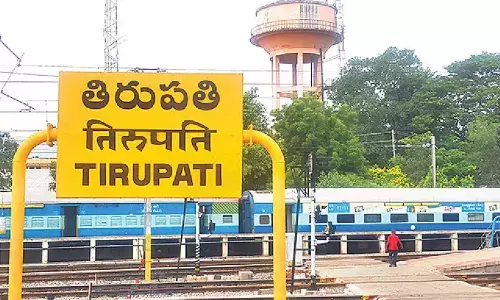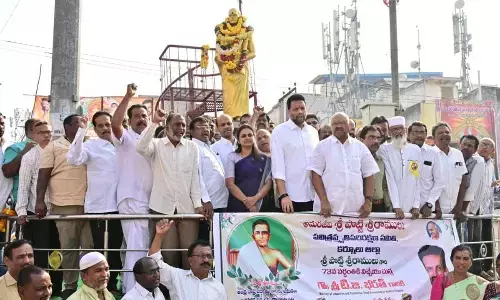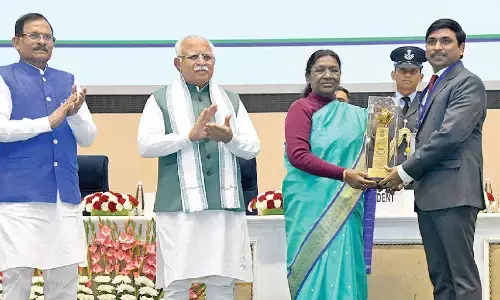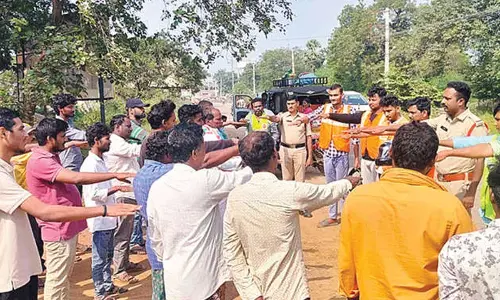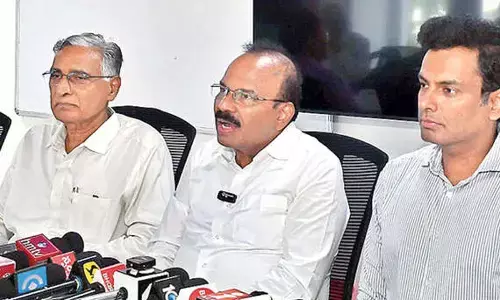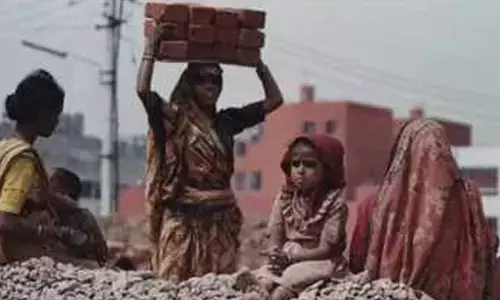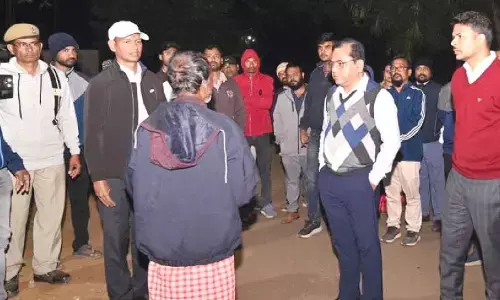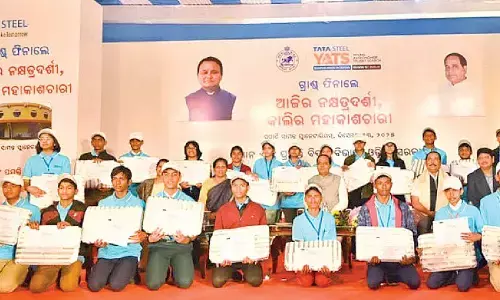Youngest state moving at a gallop
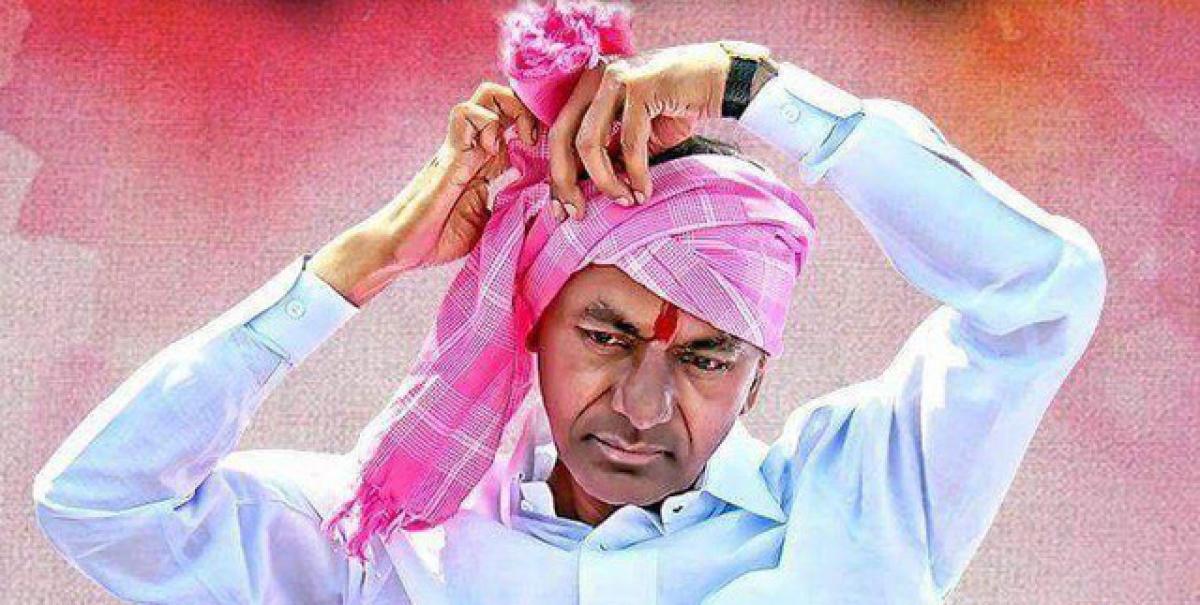
The Telangana State Budget for 2014-15 was in continuation of the Vote-on-Account Budget presented by the then government of the undivided State. The first full-year Budget for 2015-16 was prepared without the benefit of having estimates for the full 12 months of the previous year as the State was formed in June 2014.
The Telangana State Budget for 2014-15 was in continuation of the Vote-on-Account Budget presented by the then government of the undivided State. The first full-year Budget for 2015-16 was prepared without the benefit of having estimates for the full 12 months of the previous year as the State was formed in June 2014.
Though the tax devolution to the States was increased from 32 per cent to 42 per cent of the divisible pool of the Central taxes for the five-year period of 2015-20 following the recommendations of the 14th Finance Commission, the benefit has bypassed the State of Telangana just because its per capita income is higher than the national average.
The average per capita income of the State masks wide inter-district and intra-district variations. Despite the reduction in the tax devolution to the State from 2.893 per cent in 2014-15 to 2.437 per cent in the five-year period 2015-20 and reduction in plan transfers, the State has been able to maintain sound fiscal parameters and is one of the few states to become eligible for the additional borrowing facility of 0.5% of GSDP.
Budget 2016-17
By the time, the preparation of the State budget for 2016-17 was underway, the government was able to get a comprehensive idea about the trends in the State finances. It is only after the income and expenditure under Plan and Non-Plan schemes from 31st March 2015 to 31st March 2016 was known clearly, the real basis for Telangana State budget calculation was arrived at.
The first-year budget after formation of Telangana was on ad-hoc calculation based on earlier budgets and the second-year full-fledged budget is based on some exercise. Subsequently there was a total understanding and deep study department wise, scheme wise and priorities wise. That is how the government could overcome the challenge.
Though the Budget for 2016-17 was the third Budget of the State, it was in a way, the first Budget to be prepared after a comprehensive review of all items of expenditure and a realistic assessment of resources based on the facts and figures available.
It is a matter of great satisfaction that the State government was able to maintain a sustainable fiscal position despite mounting commitments on account of number of developmental and welfare schemes taken up after the formation of the State.
This has been achieved through improvement in the efficiency of revenue collections without any increase in tax rates. Telangana State stood first among all the states by clocking a growth rate of 21.1% in its own-tax revenue in 2016-17 over 2015-16.
Budget 2017-18
In the process, the fourth consecutive Budget, for the year 2017-2018, was both inspirational and message oriented. The Budget reflected the Government’s objective of reaching out to all sections of people, all those in the hereditary professions, all religions, people working in various fields, all government departments that are entrusted with the implementation of development and welfare schemes, lower income as well as middle income groups and with no exception.
Budget 2018-19
Against this background, the budget that was presented for the year 2018-2019 to the Assembly, mentions without any ambiguity as to how the schemes and programs that have been conceived and being implemented in the state during the last 45 months, could be standardized, stabilized and consolidated.
The budget also makes it clear as to how state GSDP is improved and bettered. The financial stability and progress despite GST and demonetization has also been highlighted. In addition, there is a mention about the schemes that were conceived during 2017-2018 and the way they are going to be implemented in future.
These among others include: Rs 8000 Investment Support Scheme for Agriculture, formation of Rythu Samanvaya Samithis, farmers’ insurance scheme, sheep distribution, employees welfare, 24-hour power supply to all including agriculture, more and more welfare measures, SC, ST, BC, Minority, Brahmin welfare, handloom industry development, KCR Kits etc.
Keeping in view the current and future needs of people and recognizing the priority sectors like agriculture for reaching the results to all, the way the budget has been formulated speaks volumes. This is the Role Model Budget and reflects the aspirations of public at large as the case of earlier four budgets.
Fares best in rankings
It’s no surprise that the Telangana State has been ranked number one in India Today’s (Leading English Fortnightly Magazine) Best Economy state rankings and this speaks about the buoyant economy of the state. There has been a distinct upward shift in the growth path of the economy of Telangana since its formation in June 2014.
The average annual growth of State Domestic Product (GSDP) increased from 4.2% in the two years preceding the formation of the state (2012-14) to an impressive growth of 9.5% during the three years following the formation of the State (2014-17). This apart, Telangana State stood first among all the States by clocking a growth of 21.10% in its own tax revenue in 2016-17 over 2015-16. In its report, CAG for the financial year 2017-18 stated that Telangana state stood first in the revenue growth rate in the country registering 17.82 per cent growth.
Priority to productive sectors of economy
The government has the wisdom of economy and is fully conscious of the sectors where benefits from the investments are the highest. However, the government is also spending funds to satisfy the basic needs for the welfare of poor and vulnerable.
Thus, some money goes to sectors where benefits are not directly visible but contribute to the development of human resources and make them more productive. The government’s decision to go for land records rectification and updating also will add up to 2% growth rate. (Writer is CPRO to Telangana CM)









